Sloughhouse is a very small-unincorporated community in the south Sacramento area located roughly 17 miles east-southeast of Sacramento on Route 16, the Jackson Highway. It was a stop on the trail between Placerville and Sacramento/Stockton. The town has a post office with the 95683 zip code that was established in 1916. Jared Sheldon built a roadhouse in the community in the 1850’s and named the community after another building he had built nearby. It is a registered California Landmark. Here is its history.

The name was supposed to be Slough House. Jared Dixon Sheldon (1813-1851) had all the land from Grantline Road to the Cosumnes River as part of the Omuchumnes Land Grant that he got from the Mexican government. Sheldon built the first house on the slough. It was later called “the slough house.” Sheldon gave half of his grant to his friend and partner, William Daylor (1810-1851). Later the two friends married the Rhoads sisters, Catherine (1832-1905) and Sarah (1830-1898) both is 1847. Jared was 34 and Catherine was 15 and William was 37 and Sarah 17, and so it was in those days. The two families were the first settlers on the Cosumnes River. Most of the history of Sloughhouse is connected to those two families even though both Sheldon (41 years old) and Daylor did not live very long and both died in 1851. Sheldon was killed in a gunfight by miners because he was daming up a stream on his property during the Gold Rush and Daylor (38 years old) died of Cholera. Both widows married again and continued their families.
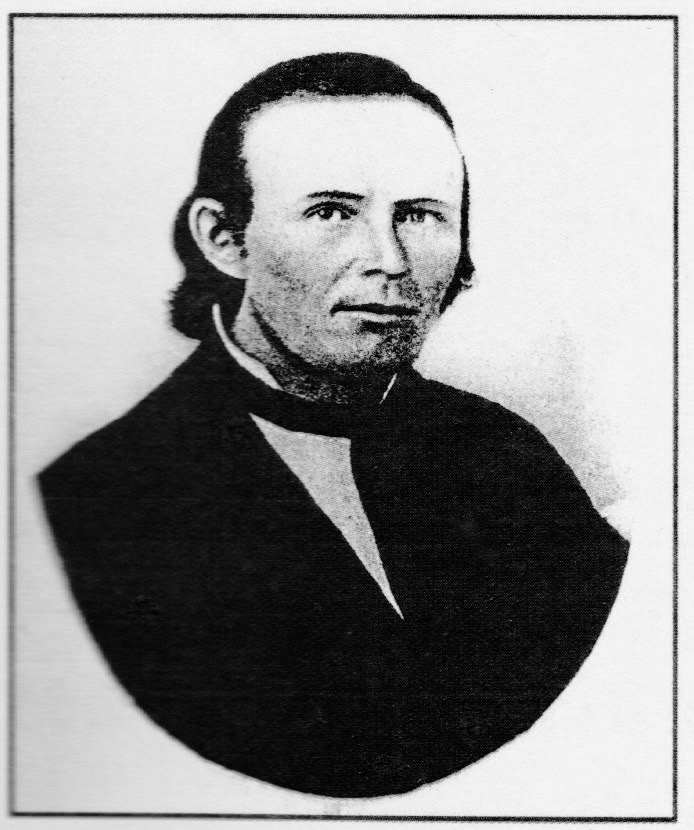

The slough house that Sheldon built was located near where Sloughhouse is right now. It is at Jackson Road where it crosses Deer Creek. The ranch house was just past Sloughhouse on Jackson Road. The building is still standing that was the store and stage stop. It was known as the Cosumnes Post Office and Store. There was a Wells Fargo Office and at times it was used for a hotel and has been used as a residence.
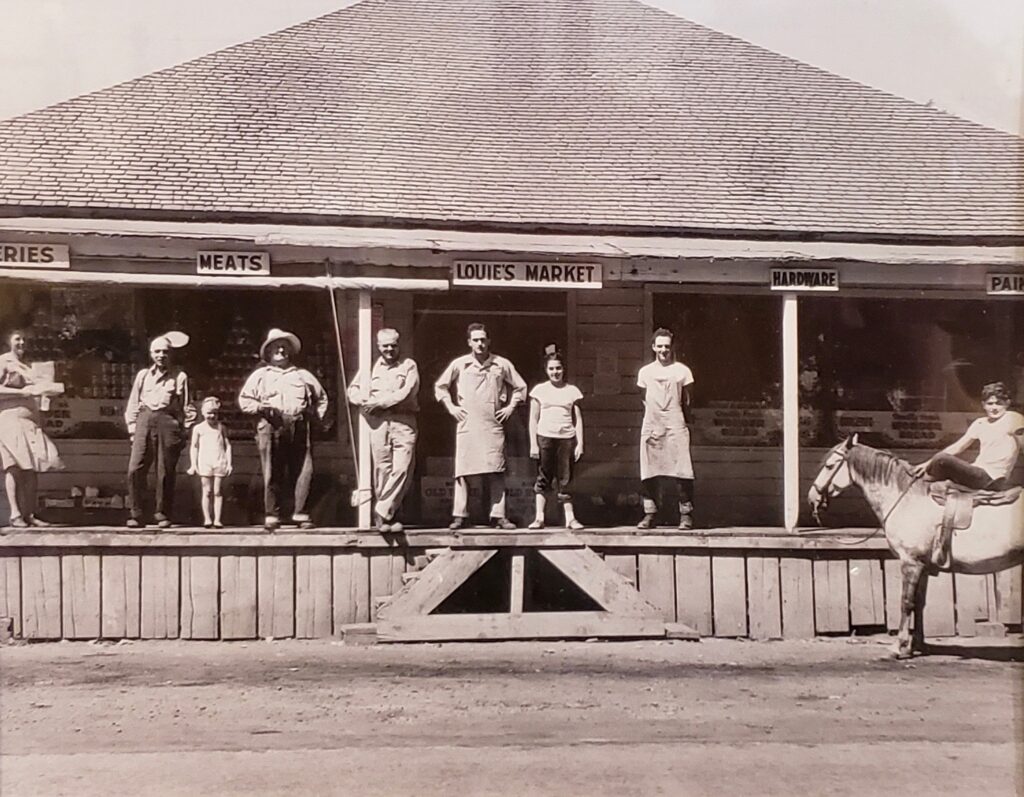
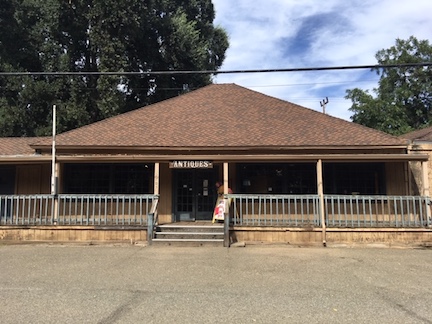

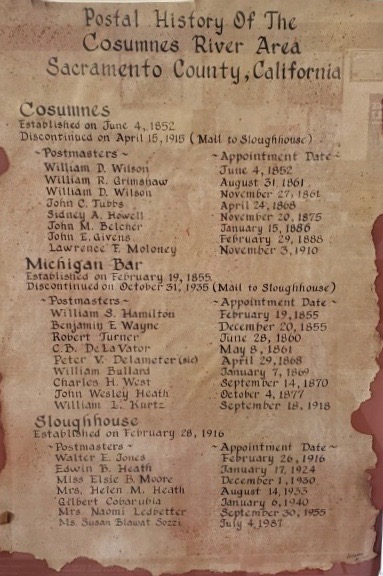
The cemetery is still there up on a hill. It is called the Sloughhoiuse Pioneer Cemetery is considered one of the first, if not the first in the county. Both Sheldon and Daylor are buried there and so are their wives, Catherine and Sarah. Daylor had been the first white man to find the “Valley of the Cosumnes” and he was the first white man to be buried there. He found it in 1941 and he died in 1851. The cemetery had been an Indian cemetery and later, it became a family cemetery for the early days.
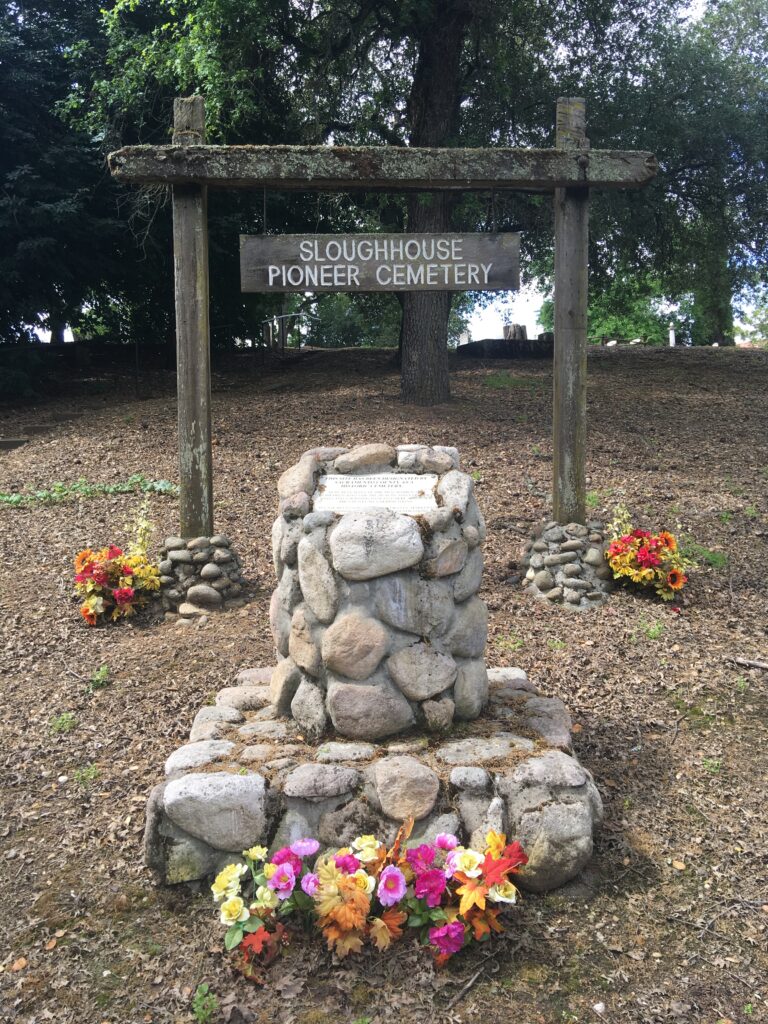


John Mahone, who was Catherine’s second husband, built the Sloughhouse bridge over Deer Creek. It washed away in 1862 and was later rebuilt.
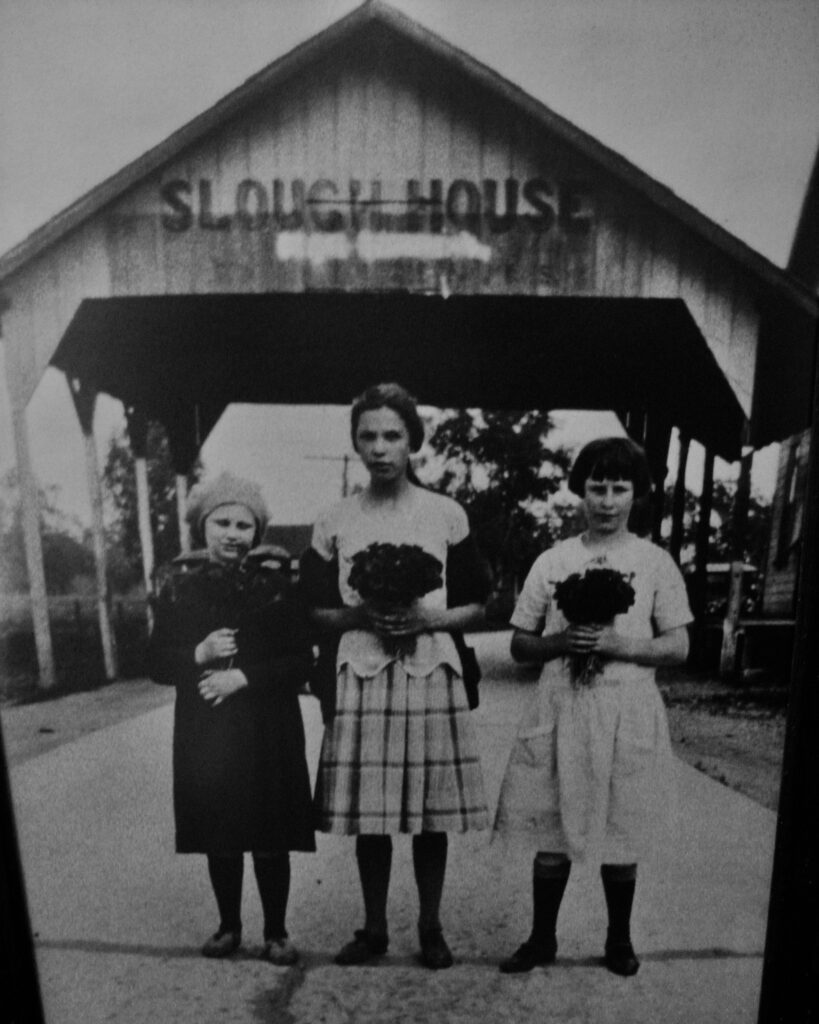
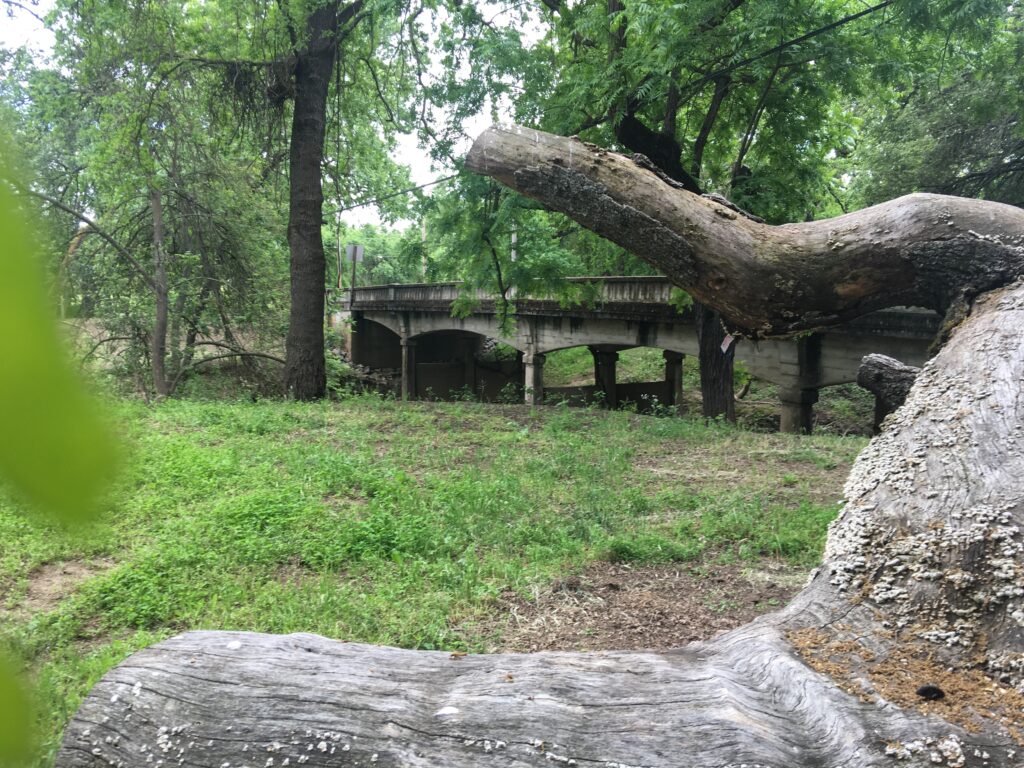

Sloughhouse was a stage stop and roadhouse for a long time. It would have many stories to tell. It is said that Leland Stanford and his friends would come out from Sacramento to spend the night at Sloughhouse. Many parts of the present building are from the old days and were brought around Cape Horn. It was a fine building in its day and still is now. Dances were held there, and people drove their horse and buggies all night to get home.
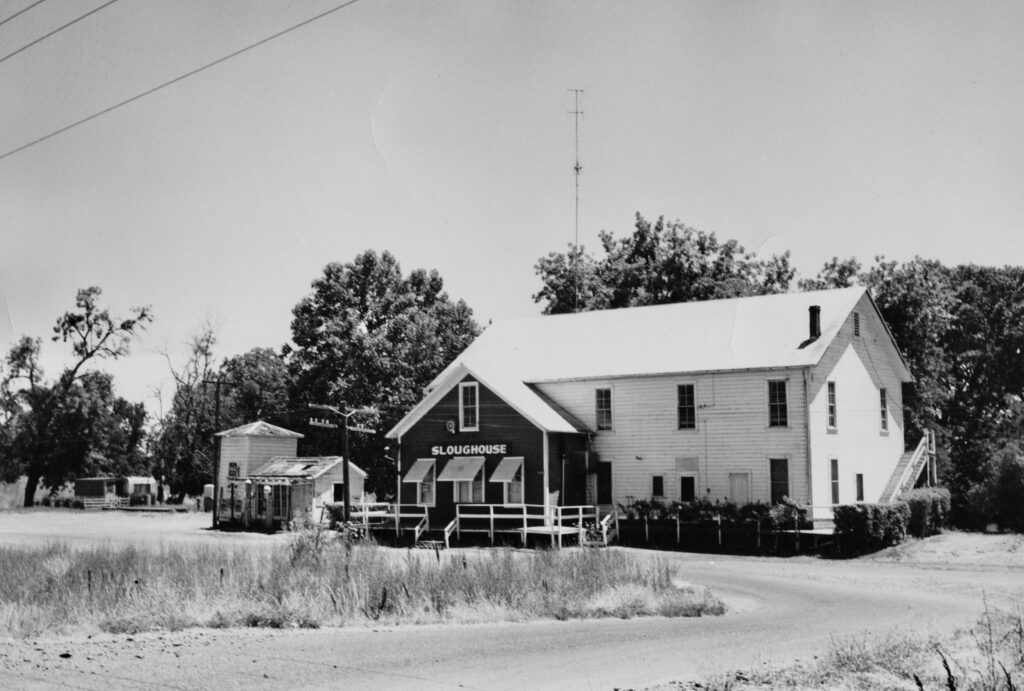

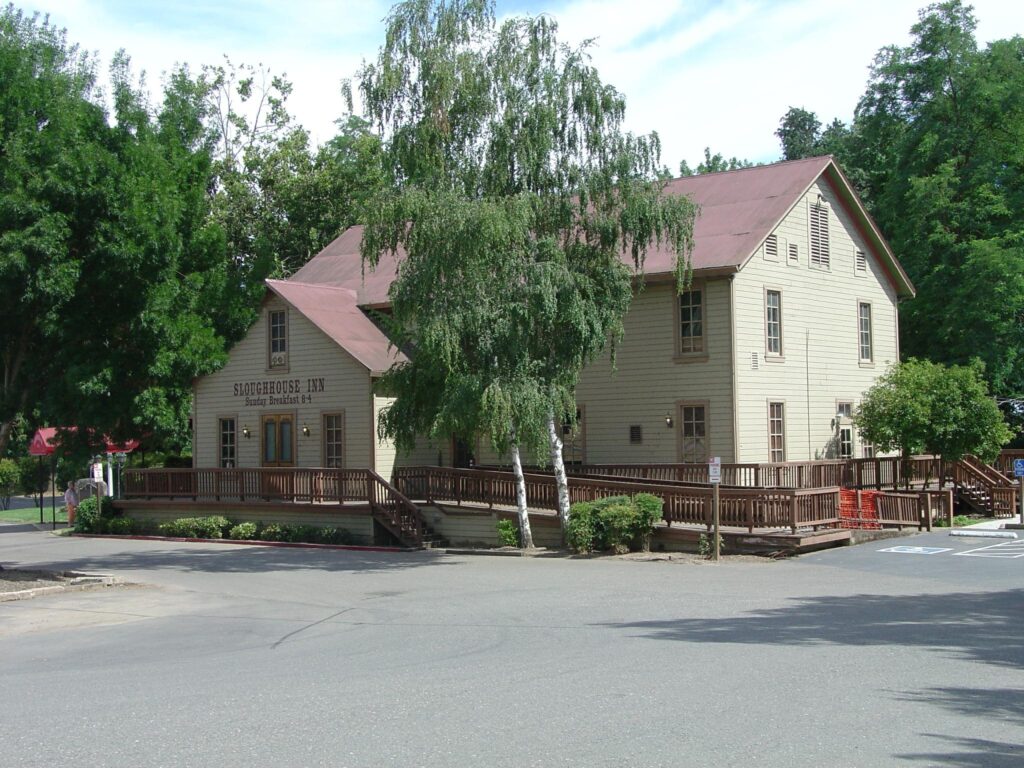

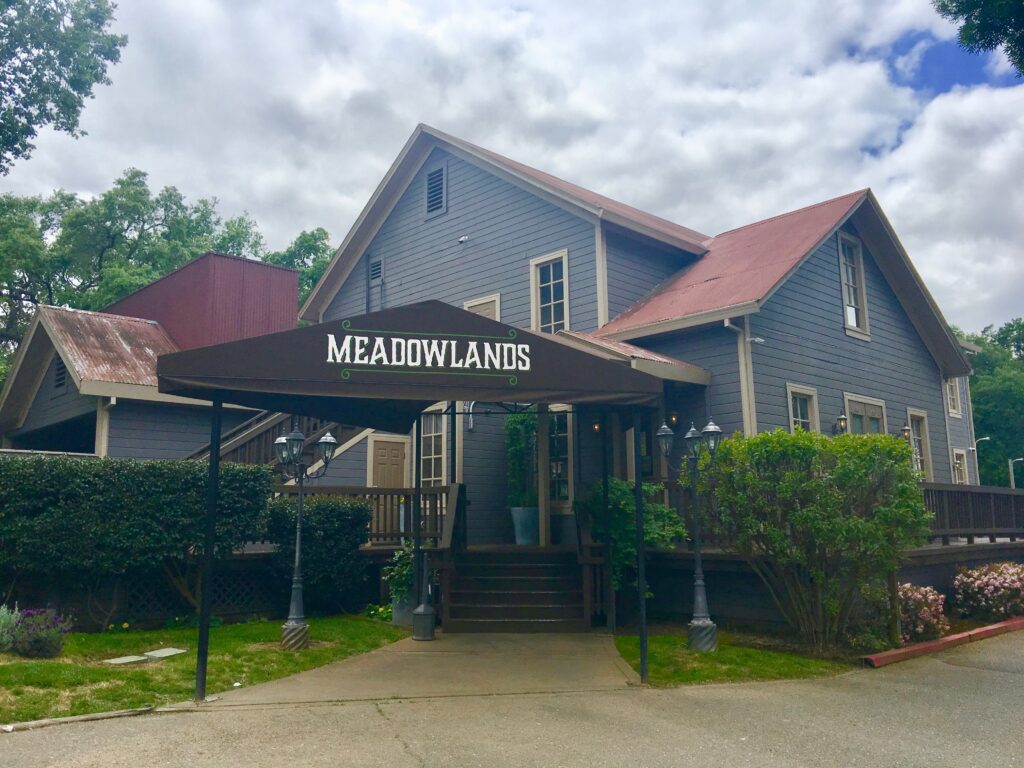
It ultimately was called the Sloughhouse Inn and became a restaurant. It had many different owners over the years and in 2020 it closed waiting for the next version.
During the great hop harvests, Sloughhouse was a very busy place. Hops are interesting plants and the Cosumnes Valley seems to be just right for them to thrive. People would come from miles around, including San Francisco and Sacramento, to help pick hops. It was like a vacation and people wopuld brong their tents and camp put for the couple of weeks. The only difference was that they would work hard in the hops all day. In the evening, they would have carnivals and fun things to enjoy. Always, there would be a super big celebration when the hop harvest was finished. We are told that water fights were among the favorite events as summers were very hot.
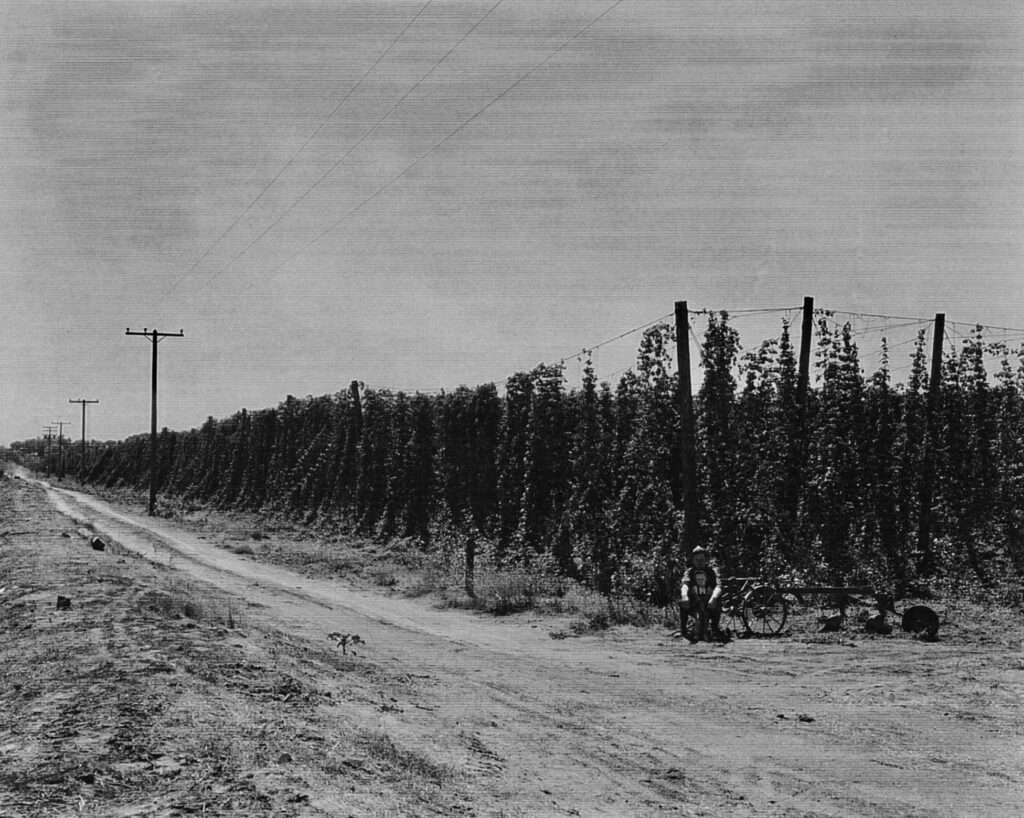
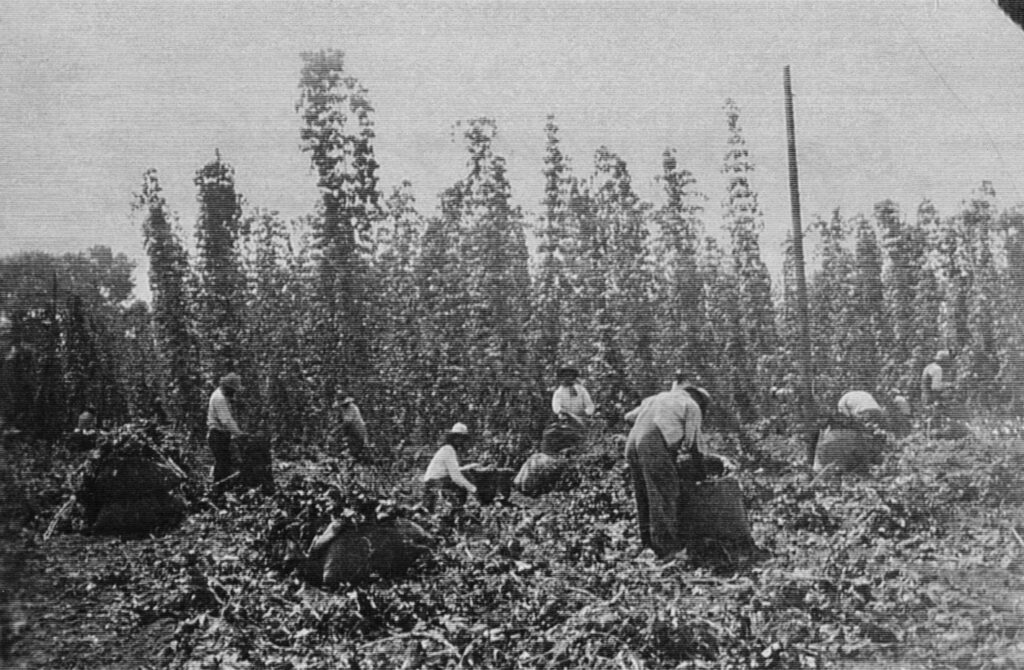
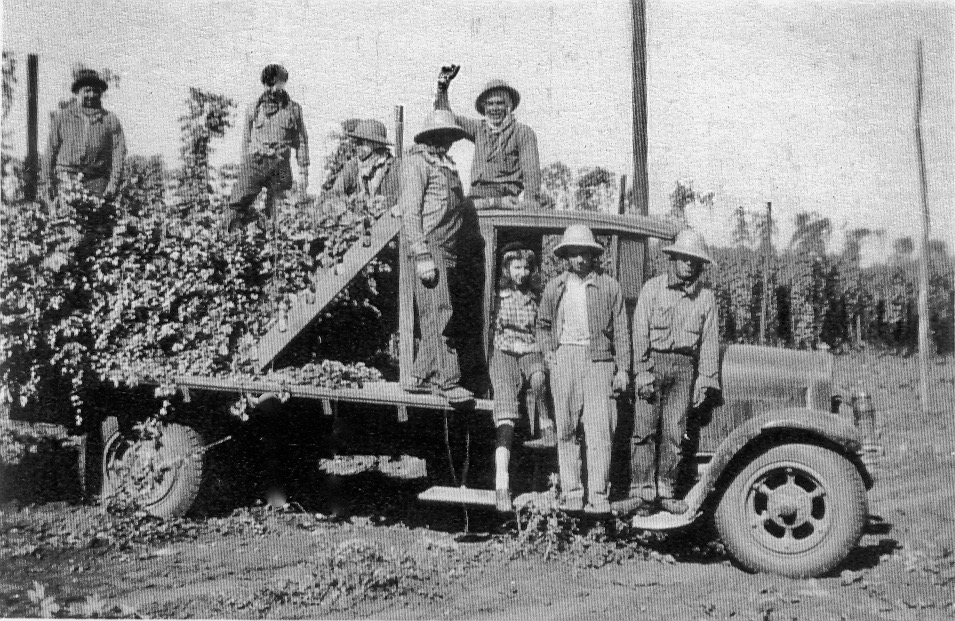
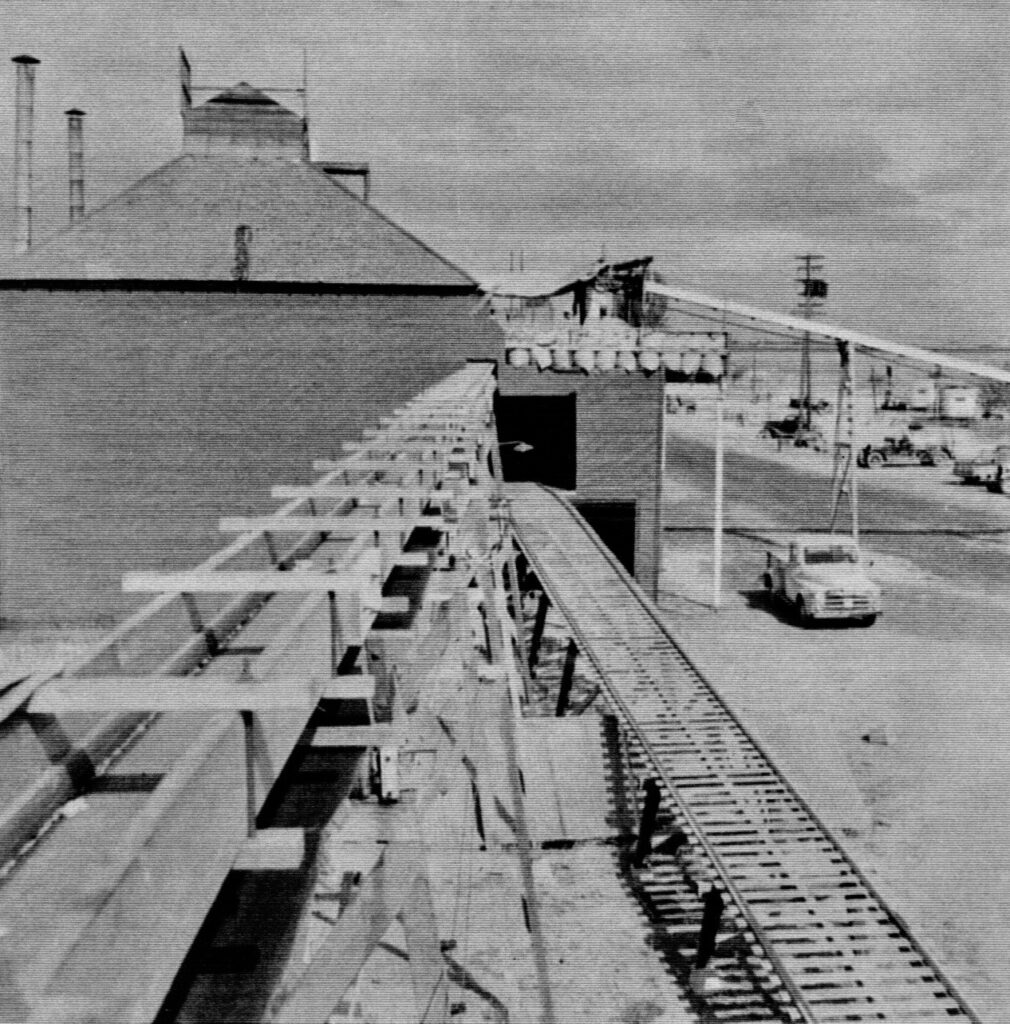
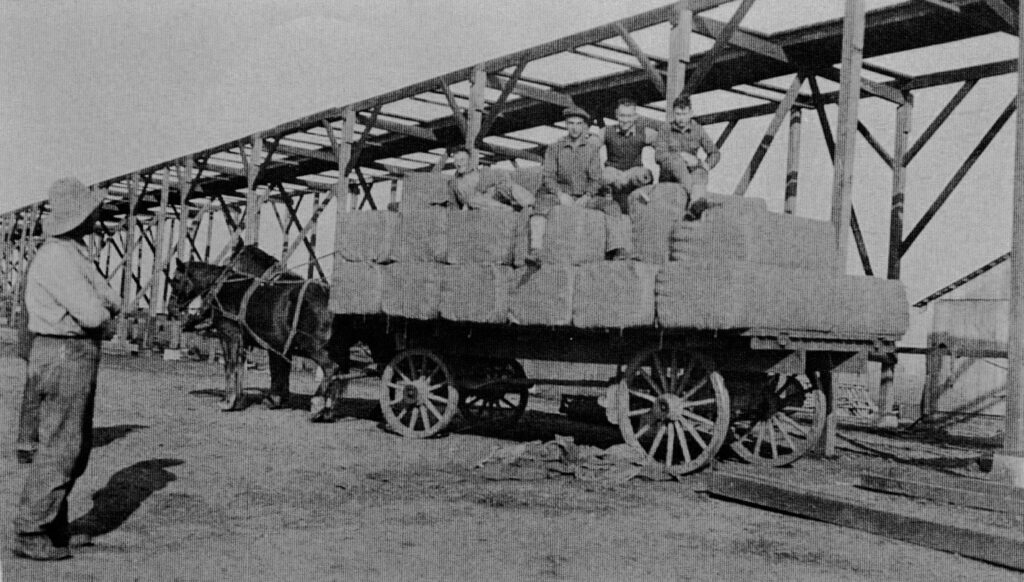
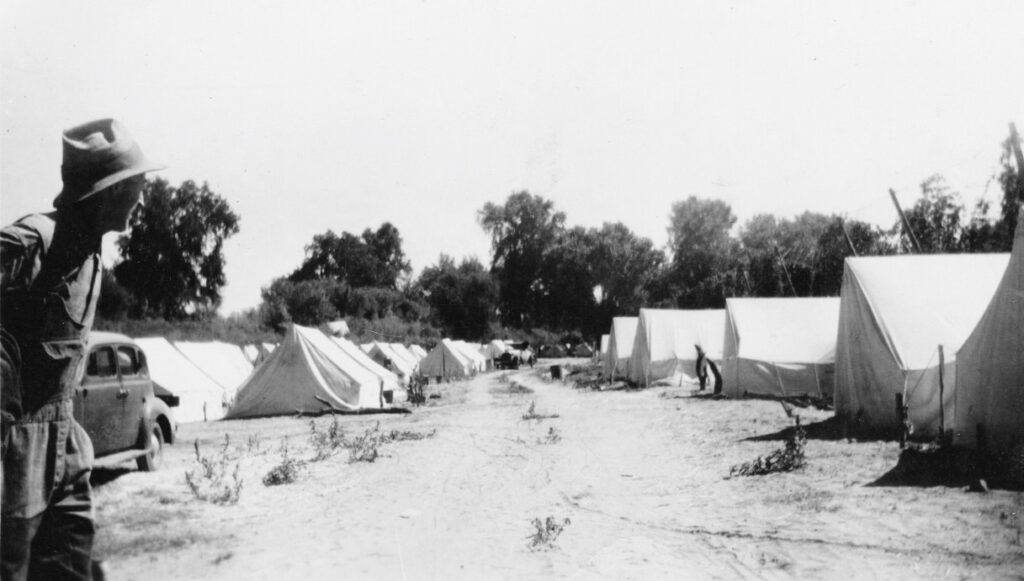
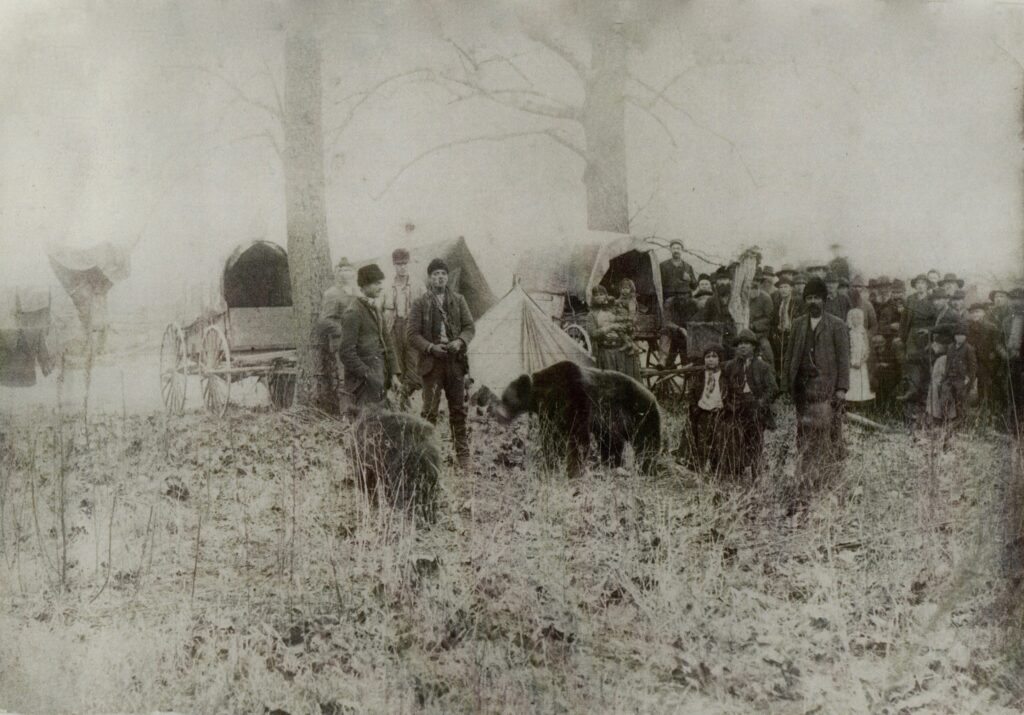
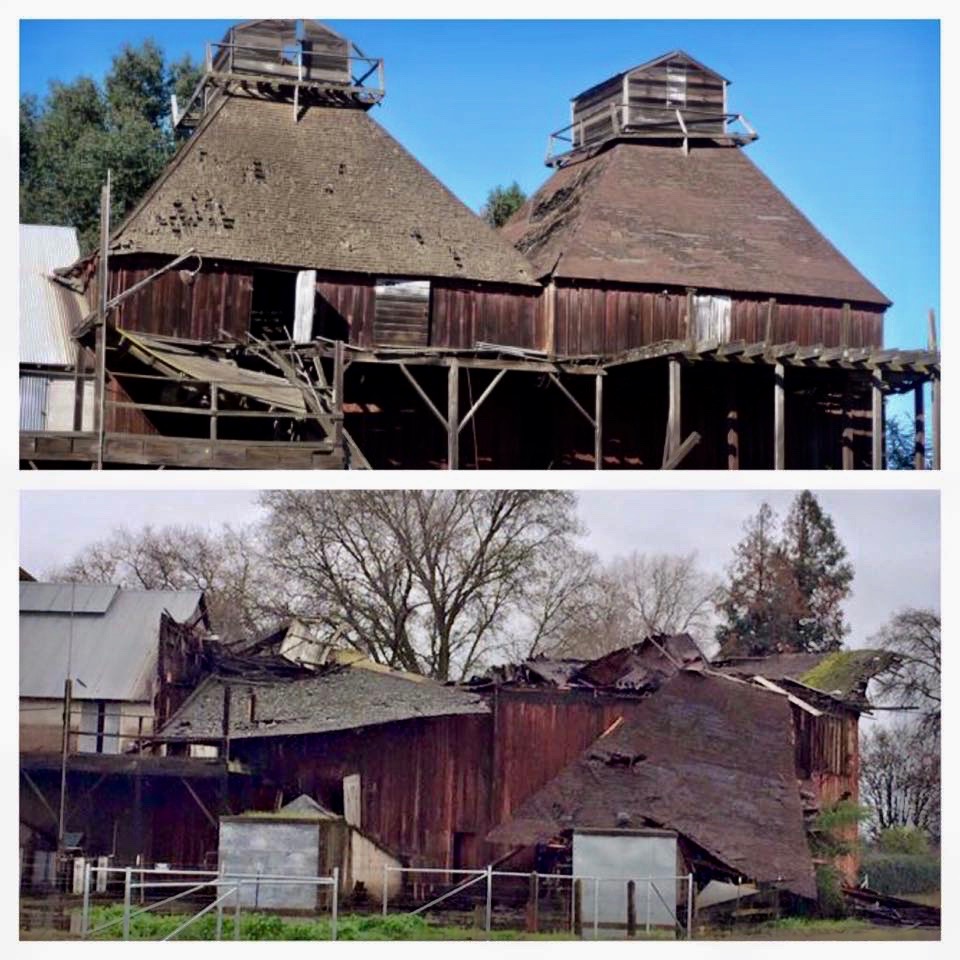
The agriculture of the Sloughhouse area and the Cosumnes Valley has come along way since William Daylor found the valley looking for John Sutter’s horses, for whom he was employed, one day in 1841. It has also come a long way since the first fields of wheat that Sheldon planted and his cows that he brought up the river all the way from Antioch. The first gristmill in Northern California was built by Sheldon, just below Sloughhouse. If you know which cottonwood tree to look for you can see what remains of the mill. It is amazing to think that the wood and bricks have stayed at that spot since 1847.
After agriculture got started in the valley, it was abandoned for a while when everybody went after gold in 1849. You just couldn’t tend to your crops when everybody was going crazy after gold. Later, when things settled down, agriculture got to be a big thing. Besides cattle and wheat, there were many other crops including hops, which have stayed a big one. Orchards were big too, and some of them were planted more than eighty years ago. There are prune orchards and many other fruits. Irrigation has always been a big thing. Water levels were much higher than they are now. When electricity came in and pumps could be installed, the whole agricultural picture changed drastically for the good.
Driving past Sloughhouse, it would be hard for you to tell that this was a booming area during the gold rush days. Past Sloughhouse there were a number of gold mining towns with thousands of people, hotels, and many different kinds of businesses: like Michigan Bar, Cook’s Bar, Sebastopol, Katesville, Live Oak, Bridgehouse, Rancho Murietta, and others. Here and there are left over objects that don’t seem to belong, but it is hard to find them. Old buildings and cemeteries can be found that will give a lot of clues.
The above article was written by Joseph Kerr Junior High School students for a small book called, “Cosumnes: Communities in the Elk Grove Area (A Kid’s History, Book-2)” published in 1975 by Wes Neff Printing Service in Elk Grove.